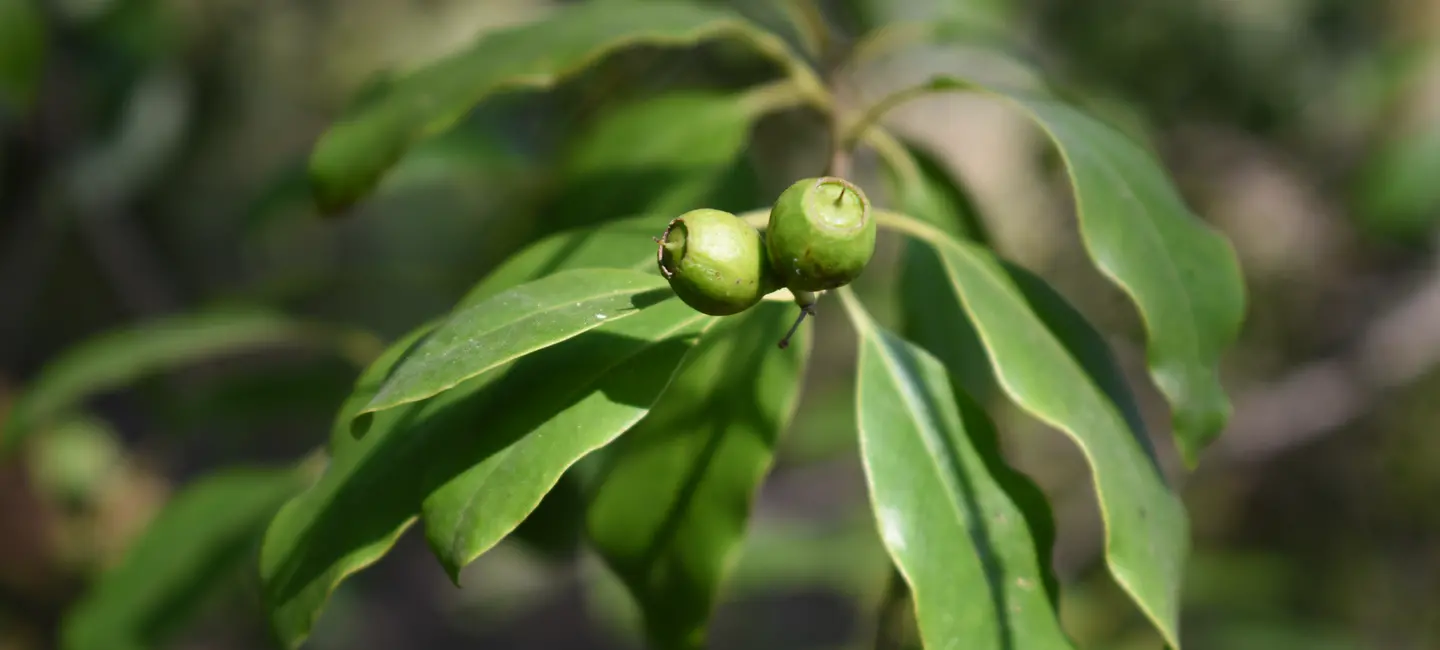
White sandalwood is an evergreen tree. The oil from the wood and the wood are used as medicine. Don't confuse white sandalwood with red sandalwood.
People use white sandalwood for the common cold, bronchitis, vaginal infections, bladder infections, and many other conditions, but there is no good scientific evidence to support these uses.
In food and beverages, white sandalwood is used as a flavoring.
In manufacturing, white sandalwood oil is used as a fragrance in soaps, cosmetics, and perfumes.
Is It Effective?
NatMed Pro rates effectiveness based on scientific evidence according to the following scale: Effective, Likely Effective, Possibly Effective, Possibly Ineffective, Likely Ineffective, Ineffective, and Insufficient Evidence to Rate.
- Mental alertness. Early research suggests that inhaling fragrance from white sandalwood oil for 20 minutes or applying white sandalwood oil to the skin does not improve mental alertness or attentiveness in healthy individuals.
- Swelling (inflammation) of the vagina (vaginitis). Early research shows that taking a mixture of white sandalwood, tamarind, and neem may reduce discomfort and discharge from the vagina in women with a vaginal infection.
- Urinary tract infections (UTIs).
- Common cold.
- Cough.
- Bronchitis.
- Fevers.
- Sore mouth and throat.
- Headache.
- Heatstroke.
- Liver and gallbladder problems.
- Other conditions.
More evidence is needed to rate the effectiveness of white sandalwood for these uses.
Is it Safe?
White sandalwood might help prevent the growth of fungus and bacteria. It might also reduce spasms and help people relax. But more information is needed.
When taken by mouth: White sandalwood is LIKELY SAFE when taken by mouth in food amounts. But it is POSSIBLY UNSAFE when taken by mouth as a medicine for longer than 6 weeks. There have been reports of kidney damage with prolonged use. White sandalwood can also cause itching, nausea, and stomach upset.
When applied to the skin: There isn't enough reliable information to know if white sandalwood is safe in amounts greater than those contained in cosmetics. Contact with white sandalwood can cause allergic skin reactions in some people.
When inhaled: There isn't enough reliable information to know if white sandalwood is safe or what the side effects might be.
Special Precautions & Warnings:
Pregnancy and breast-feeding: Taking white sandalwood by mouth in greater-than-food amounts is LIKELY UNSAFE if you are pregnant. There have been reports of miscarriages.
There isn't enough reliable information to know if white sandalwood is safe to use when breast-feeding. Stay on the safe side and avoid use.
Kidney disease: Don't use white sandalwood if you have kidney problems. It might make kidney disease worse.
Lithium
Interaction Rating=Moderate Be cautious with this combination.
White sandalwood might have an effect like a water pill or "diuretic." Taking white sandalwood might decrease how well the body gets rid of lithium. This could increase how much lithium is in the body and result in serious side effects. Talk with your healthcare provider before using this product if you are taking lithium. Your lithium dose might need to be changed.
There are no known interactions with herbs and supplements.
There are no known interactions with foods.
The appropriate dose of white sandalwood depends on several factors such as the user's age, health, and several other conditions. At this time there is not enough scientific information to determine an appropriate range of doses for white sandalwood. Keep in mind that natural products are not always necessarily safe and dosages can be important. Be sure to follow relevant directions on product labels and consult your pharmacist or physician or other healthcare professional before using.
Ananditam, Bois de Santal Blanc, Bois de Santal Jaune, Chandan, Chandana, East Indian Sandalwood, Huile de Santal Blanc, Oil of Sandalwood, Safed-Chandan, Sandal Safed, Sandal Tree, Sándalo, Sanderswood, Santal, Santal Blanc, Santal Citrin, Santali Lignum Albi, Santal Oil, Santalum album, Swet Chandan, Taliaparnam, Tan Xiang, White Sandalwood Oil, White Saunders, Yellow Sandalwood, Yellow Saunders.
Information on this website is for informational use only and is not intended to replace professional medical advice, diagnosis, or treatment. While evidence-based, it is not guaranteed to be error-free and is not intended to meet any particular user’s needs or requirements or to cover all possible uses, safety concerns, interactions, outcomes, or adverse effects. Always check with your doctor or other medical professional before making healthcare decisions (including taking any medication) and do not delay or disregard seeking medical advice or treatment based on any information displayed on this website.
© TRC Healthcare 2024. All rights reserved. Use and/or distribution is permitted only pursuant to a valid license or other permission from TRC Healthcare.
